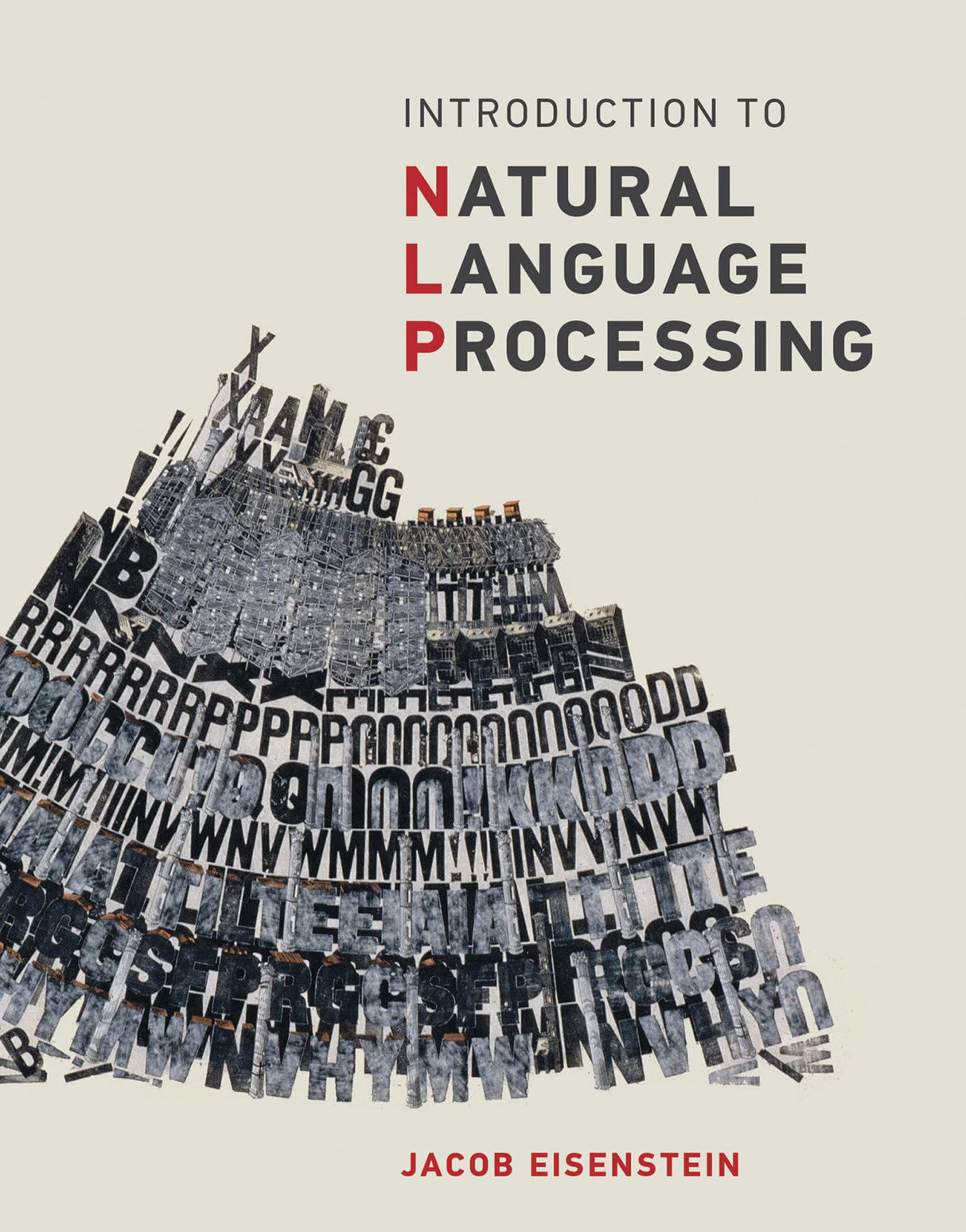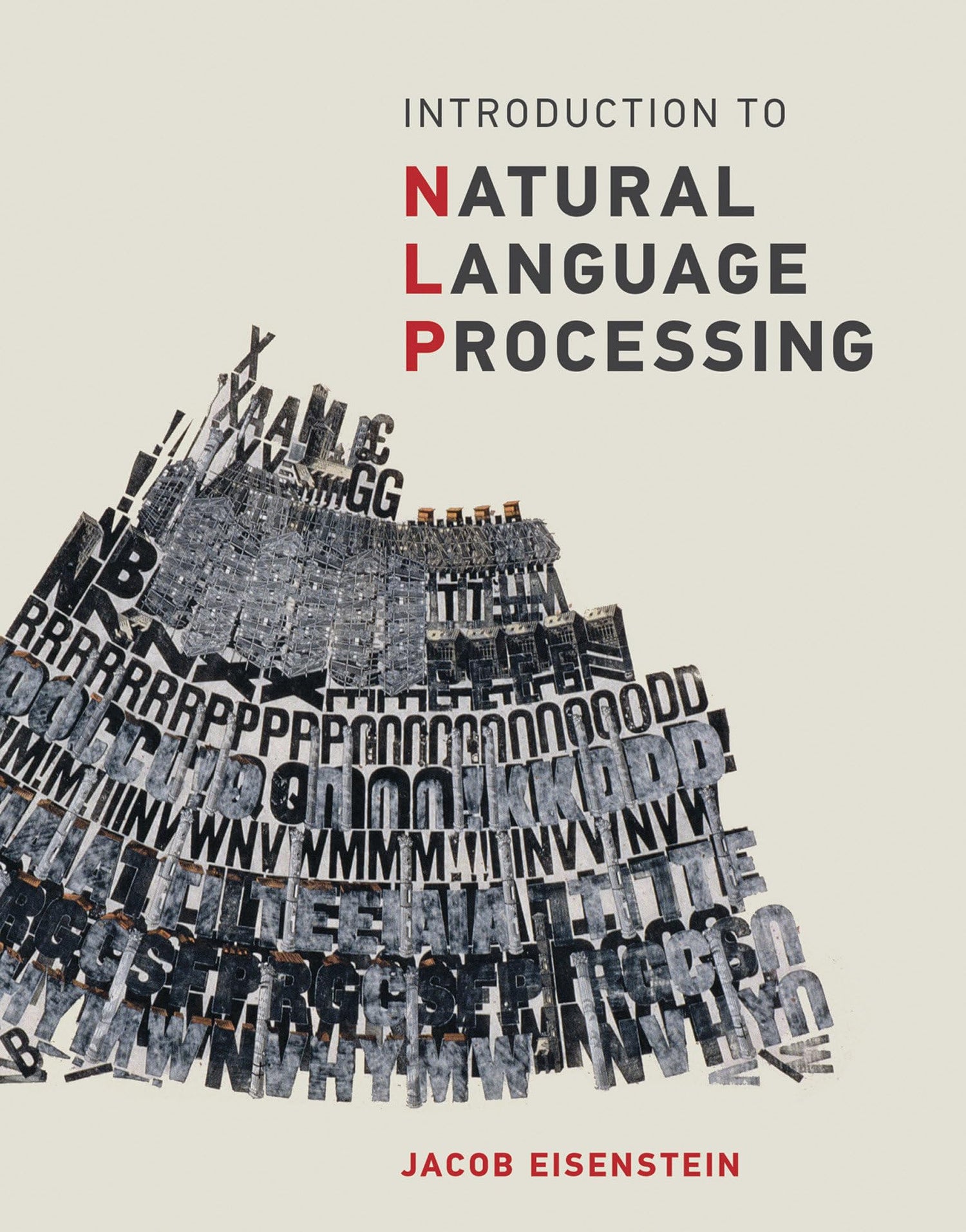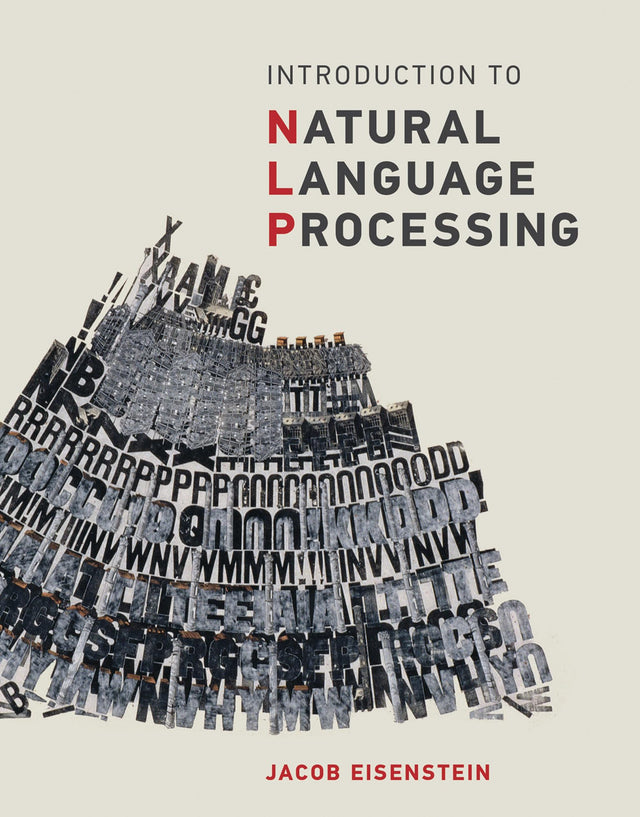Introduction to Natural Language Processing (Adaptive Computation and Machine Learning series)
Introduction to Natural Language Processing (Adaptive Computation and Machine Learning series) is backordered and will ship as soon as it is back in stock.
Couldn't load pickup availability
Genuine Products Guarantee
Genuine Products Guarantee
We guarantee 100% genuine products, and if proven otherwise, we will compensate you with 10 times the product's cost.
Delivery and Shipping
Delivery and Shipping
Products are generally ready for dispatch within 1 day and typically reach you in 3 to 5 days.
Book Details
-
Author: Jacob Eisenstein
-
Publisher: MIT Press
-
Color: White
-
Edition: Illustrated Edition
-
Binding: Hardcover
-
Format: Illustrated
-
Number of Pages: 536
-
Release Date: 01-10-2019
-
ISBN: 9780262042840
-
Languages: English
-
Package Dimensions:
-
Length: 9.2 inches
-
Width: 7.3 inches
-
Height: 1.3 inches
-
About The Book
"Natural Language Processing: A Computational Perspective" by Jacob Eisenstein offers a thorough survey of computational methods used to understand, generate, and manipulate human language. This textbook provides an insightful synthesis of classical representations and algorithms alongside modern machine learning techniques, offering both theoretical and practical knowledge for those studying natural language processing (NLP).
The book is structured into four sections, each focusing on different aspects of NLP. The first section lays a solid foundation in machine learning by introducing essential tools and applying them to word-based textual analysis. The second section covers structured representations of language, including sequences, trees, and graphs, enabling a deeper understanding of language’s structure. The third section delves into linguistic meaning representation, including approaches from formal logic to neural word embeddings. Finally, the book explores three transformative NLP applications: information extraction, machine translation, and text generation.
Throughout the book, end-of-chapter exercises provide both theoretical analysis and software implementation challenges, helping students solidify their understanding and practical skills. This textbook integrates the latest data-driven approaches, focusing on both supervised and unsupervised machine learning techniques, while drawing on a diverse body of research in computational linguistics.
Suitable for advanced undergraduate and graduate courses, as well as a reference for software engineers and data scientists, this book requires a background in computer programming and college-level mathematics. After completing this book, students will be equipped with the technical skills to build, analyze, and understand state-of-the-art natural language processing systems.
With 536 pages of meticulously detailed content, this book is a must-have resource for anyone serious about diving into the world of natural language processing. Its dimensions (9.2 x 7.3 x 1.3 inches) make it both practical for study and easy to reference.





